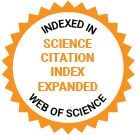Journal of Medical Internet Research
The leading peer-reviewed journal for digital medicine and health and health care in the internet age.
Editor-in-Chief:
Gunther Eysenbach, MD, MPH, FACMI, Founding Editor and Publisher; Adjunct Professor, School of Health Information Science, University of Victoria, Canada
Impact Factor 5.8 CiteScore 14.4
Recent Articles

Telehealth technologies can enhance patients’ and their families’ access to high-quality resources in home-based palliative care. Nurses are deeply involved in delivering telehealth in home-based palliative care. However, no previous integrative systematic reviews have synthesized evidence on nurses’ roles, facilitators, and barriers to implementing nurse-delivered telehealth in home-based palliative care.

Nonpharmacological management plays a key role in enhancing the quality of life for individuals with chronic obstructive pulmonary disease (COPD), asthma, or both. However, disparities in their physical, mental, and health empowerment outcomes have not been fully explored, particularly in relation to the moderating effect of eHealth literacy.

Children and adolescents extensively use the internet in their daily lives, often seeking information related to health and well-being. In modern society, the volume of health information available in digital environments is constantly increasing. This includes both reliable and misleading content, making it challenging to assess trustworthiness. Digital health literacy is essential for navigating the digital information ecosystem, protecting oneself from misinformation, and making informed health decisions.

Mental health is emerging as an increasingly prevalent public issue globally. There is an urgent need in mental health for efficient detection methods, effective treatments, affordable privacy-focused health care solutions, and increased access to specialized psychiatrists. The emergence and rapid development of large language models (LLMs) have shown the potential to address these mental health demands. However, a comprehensive review summarizing the application areas, processes, and performance comparisons of LLMs in mental health has been lacking until now.

Managing chronic diseases remains a critical challenge in primary health care (PHC) across the Organization for Economic Co-operation and Development countries. Electronic patient-reported outcome measures (ePROMs) are emerging as valuable tools for enhancing patient engagement, facilitating clinical decision-making, and improving health outcomes. However, their implementation in PHC remains limited, with significant variability in effectiveness and adoption.

Obtaining a representative sample is a substantial challenge when undertaking health research among hidden and hard-to-reach populations such as men who have sex with men Web-based respondent-driven sampling (WEB RDS) was developed to overcome such sampling challenges and to create population estimates based on network and sampling characteristics. Despite a decade of research, it remains unclear whether WEB RDS is suitable for sampling hidden populations such as men who have sex with men.

People living with chronic diseases are increasingly seeking health information online. For individuals with diabetes, traditional educational materials often lack reliability and fail to engage or empower them effectively. Innovative approaches such as retrieval-augmented generation (RAG) powered by large language models have the potential to enhance health literacy by delivering interactive, medically accurate, and user-focused resources based on trusted sources.

Prenatal insomnia symptoms are prevalent, debilitating, and largely untreated; yet, there is a lack of empirically supported and accessible interventions. Mindfulness-based interventions have been theoretically hypothesized to alleviate insomnia symptoms by counteracting adverse sleep-related cognitive and behavioral processes, although few studies have tested them.

Alarm fatigue, a multifactorial desensitization of staff to alarms, can harm both patients and health care staff in intensive care units (ICUs), especially due to false and nonactionable alarms. Increasing amounts of routinely collected alarm and ICU patient data are paving the way for training machine learning (ML) models that may help reduce the number of nonactionable alarms, potentially increasing alarm informativeness and reducing alarm fatigue. At present, however, there is no publicly available dataset or process that routinely collects information on alarm actionability (ie, whether an alarm triggers a medical intervention or not), which is a key feature for developing meaningful ML models for alarm management. Furthermore, case-based manual annotation is too slow and resource intensive for large amounts of data.

Systemically identifying caregivers in the electronic health record (EHR) is a critical step for delivering patient-centered care, enhancing care coordination, and advancing research and population health efforts in caregiving. Despite EHRs being effective in identifying patients through standardized data fields like demographics, laboratory results, medications, and diagnoses, identifying caregivers through the EHR is challenging in the absence of specific caregiver fields.
Preprints Open for Peer-Review
Open Peer Review Period:
-
Open Peer Review Period:
-
Open Peer Review Period:
-
Open Peer Review Period:
-


















